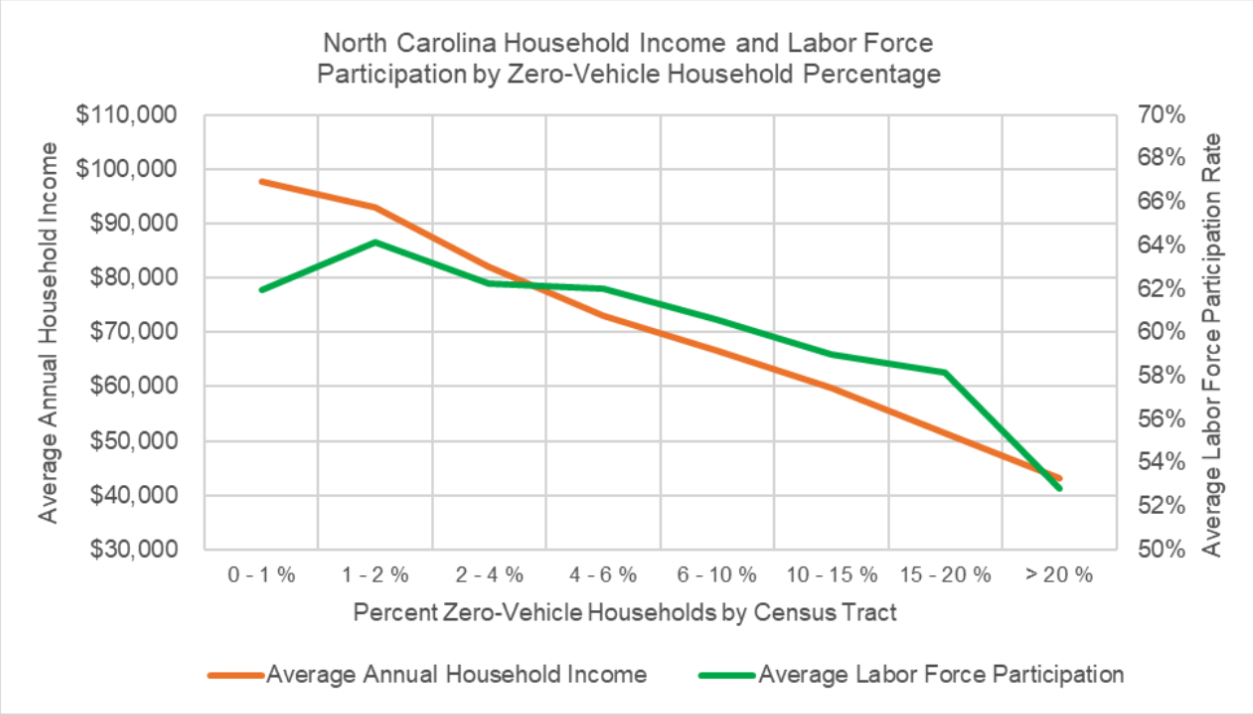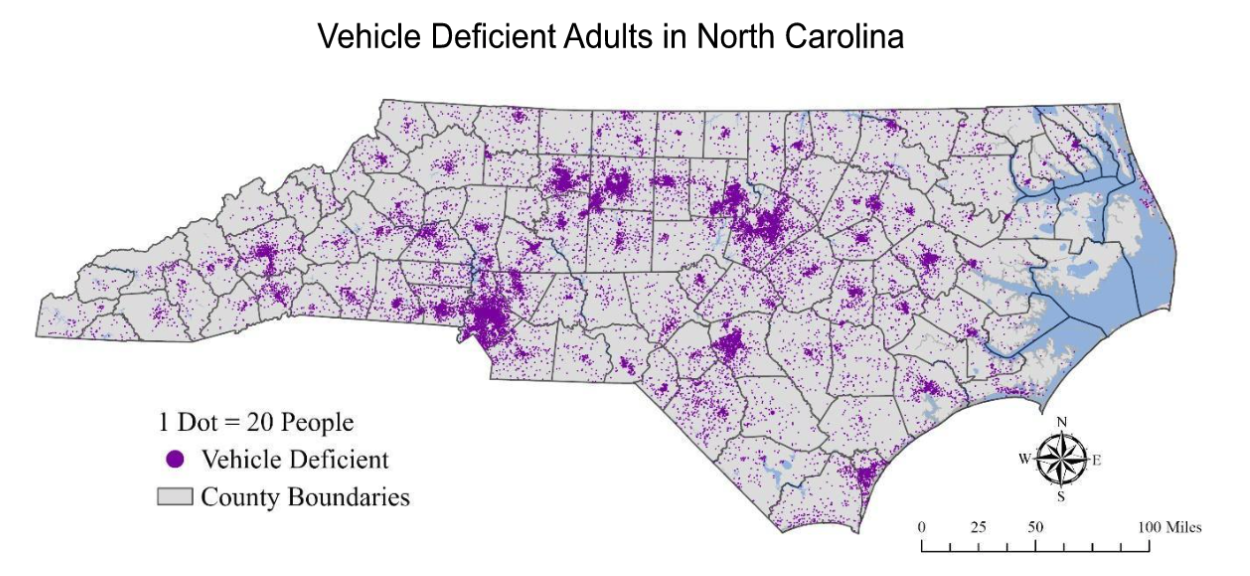The COVID-19 pandemic elevated our collective awareness of transportation disparities. Frontline workers have lower wages on average, are more likely to be from socio-economically disadvantaged groups than the overall workforce, and are more likely to face transportation barriers. Additionally, low-income and minority population groups have poorer access to jobs, education, and health care, including COVID-19 vaccinations and treatment, due in part to transportation challenges.
Although these disparities have received more attention recently, they have always existed in an inherently inequitable transportation system that favors those with the means and ability to own and drive a car. In North Carolina, having a car is often a prerequisite for success. As shown in the graph below, areas of the state with higher rates of zero-vehicle households have lower average household incomes and lower average rates of labor force participation. It’s no coincidence that those without a car are less likely to seek employment, due in part to a lack of reliable transportation.

Data from 2020 American Community Survey 5-Year Estimates
More than 1 million individuals in North Carolina live in a household without a car or have other barriers limiting their ability to regularly use a vehicle (e.g., disability, car sharing with other adults, or frequent car maintenance). The map below shows vehicle deficiency exists in all areas of the state.

Analysis and map via Institute of Transportation Research and Education at North Carolina State University
Disparities are Greater for Minorities
Transportation disparities are more prevalent among minority populations in North Carolina. People of color are nearly three times more likely to live in a household without a car and make up over 60 percent of transit riders, despite accounting for only 30 percent of the state’s population. The average statewide commute time to work by transit is 41 minutes, compared to an average commute time of 25 minutes by car, and the cumulative impact of these longer commutes is disproportionately felt by people of color.
Reasons to Change Our Paradigm
Though recognition of transportation disparities is growing, moving the needle toward meaningful solutions is challenging. Now more than ever, there are compelling reasons to adjust our approach. The following trends must be recognized and considered inclusively to avoid perpetuating current disparities.
- Our population is changing. By 2030, one in five North Carolinians will be at least 65 years old. Older adults often need multimodal options so they can safely age in place. Additionally, in the next two decades, minorities will account for 63 percent of the state’s population growth. People of color and foreign-born residents are more likely to use public transit on a regular basis.
- Our climate is changing. Temperatures are rising, due in part to greenhouse gas emissions. Transportation accounts for over a third of greenhouse gas emissions in North Carolina, and 88 percent of transportation emissions are from light-duty gasoline vehicles and medium/heavy-duty diesel vehicles. The most severe impacts of climate change fall disproportionately on low-income, minority populations. Low- or zero-emission vehicles and shared mobility options produce far fewer emissions than single-occupant vehicles.
- Technologies are advancing rapidly. New technologies like on-demand microtransit, autonomous vehicles, and Mobility-as-a-Service (MaaS) can narrow the time and convenience gap between driving and public transportation. This presents an opportunity to provide equitable mobility solutions for those with limited vehicle access.
- Our travel patterns are changing. Part-time telework and fully remote work are likely to persist after the pandemic, potentially resulting in less peak-hour congestion and more dispersed trip patterns throughout the day. The anticipated proliferation of connected and autonomous vehicles in the next 10 to 20 years may lead to changes in typical vehicle spacing and operational efficiencies, better maximizing existing roadway capacity. And autonomous vehicles may result in changes in driver and rider commute time preferences. These changes may encourage a resource priority shift away from roadway capacity expansion toward shared mobility and optimization of roadway operations.
A Transportation Vision for Everyone
A transportation vision should be aspirational and rooted in desired outcomes for people. Envision a future where:
- Everyone has equal access to opportunities and services.
- Multimodal options rival driving in terms of time, convenience, and cost.
- There are zero transportation-related fatalities, injuries, and greenhouse gas emissions.
- Everyone is happier, healthier, and more likely to participate and succeed in the economy.
This vision does not portend a reduction in existing freedoms or transportation autonomy. Those who want to continue driving a personal vehicle can do so, while others can gain a level of access and mobility they have never had. This vision is a win-win — those who want and need better multimodal options get them, leading to fewer cars on the road, less congestion, and more workers in the labor force.
Imagine a transportation system that achieves this vision:
- The existing road network footprint is well-maintained, safe, optimized for operational efficiency, and accommodating of all road users.
- Further road network expansion is addressed, especially in instances of extreme operational inefficiency, unsafe conditions, or in isolated rural areas with insufficient vehicle access.
- Transportation funding levels are stable and sufficient to build, operate, and maintain the transportation system of the future. Last year, the North Carolina Future Investment Resources for Sustainable Transportation (NC FIRST) Commission detailed approaches to achieve this.
- A robust network of multimodal services connects people where they want to be. Services include:
- Intercity and commuter passenger rail that connects rural and urban areas.
- Advanced Air Mobility and traditional regional air service.
- Robust intercity bus network coverage.
- Ferry service in coastal regions.
- Premium fixed-route transit services, like bus-rapid transit, light rail, streetcars, and traditional high-frequency buses in dense urban areas.
- On-demand public microtransit and traditional pre-scheduled, demand-responsive public transit.
- First/last mile connections to local transit systems, including micromobility and bike-share services.
- Shared e-bike services positioned near dedicated bicycle commute corridors.
- The multimodal network is supported by four key pillars of mobility:
- Mobility-as-a-Service – all journeys, including those across different modes or jurisdictional boundaries, can be planned, scheduled, purchased, and tracked in a common application.
- ACES – Multimodal services are autonomous. connected. electric, and shared.
- Mobility hubs – Multimodal services in each community are connected at mobility hubs that often double as a central location for events and community resources.
- Complete Streets – Mobility hubs and services are connected to key destinations by complete streets that ensure safety and mobility for all facility users.
We are at a crossroads in transportation, and the path we choose will have a lasting impact on future generations. This moment presents an opportunity to tackle disparities, proactively embrace the future of mobility, and adapt our business model to better meet the evolving needs of residents.
What path will we choose, and how will we justify our choice to future generations?
Ryan Brumfield is currently the Director of NCDOT’s Integrated Mobility Division. Ryan joined the Integrated Mobility Division in April 2020 as the Innovations and Data Branch Manager. Ryan was previously the Senior Transportation Advisor for the Appalachian Regional Commission where he led efforts to improve transportation access to opportunities and services for Appalachian residents and businesses. Prior to his work with ARC, Ryan was with the Federal Highway Administration for several years, most recently as the manager of the TIGER (now RAISE) discretionary grant program. Ryan has bachelors and masters degrees in civil engineering from the University of North Carolina at Charlotte and is a registered professional engineer.





